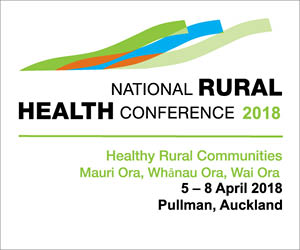The seven reasons why exercise and pulmonary rehabilitation programme can make a difference to chronic obstructive pulmonary disease (COPD) sufferers are being promoted to mark World COPD Day.
At least 200,000 people or 15 per cent of the New Zealand population are thought to have the often undiagnosed condition, mainly caused by smoking, with symptoms including coughing, increasing phlegm and breathlessness.
The Asthma and Respiratory Foundation NZ is marking COPD Day by encouraging those who have been diagnosed to take part in pulmonary rehabilitation, a programme of exercise, education and support to learn to breathe – and function – at the highest level possible.
The seven reasons why pulmonary rehabilitation is good for COPD are:
1. It improves your exercise capacity! Get more done in your day.
2. It helps you learn about COPD and how to manage it! Don’t let breathlessness get in the way of having a good time.
3. Classes are fun! Get out of your house, meet new people and make new friends.
4. It’s good for everyone! People benefit regardless of how severe their breathlessness is. Even people on home oxygen can improve their exercise capacity and manage their breathing better.
5. Exercise is good for your sex life! Breathlessness doesn’t just happen when you’re hanging out the washing or going for a walk.
6. It helps you feel in control of your health and wellbeing. Take charge of your life.
7. It improves your quality of life! All of the above.
At higher risk of COPD are people over the age of 40, who have at any stage been a smoker or worked in a job exposing them to dust, gas or fumes. Visit your doctor if you fit in this category and experience coughing, increased phlegm or breathlessness.
Today (November 15) is World COPD Day.
Facts about COPD in New Zealand
Chronic obstructive pulmonary disease (COPD) in New Zealand:
- 35,310 New Zealanders are estimated to be living with severe COPD requiring stays in hospital (Barnard & Zhang, 2016).
- COPD is often undiagnosed, and for this reason at least 200,000 (or 15%) of the adult population may be affected (Broad & Jackson, 2003).
- Between 2000 and 2013 there were no changes in COPD hospitalisation rates, but there was a decline in reported mortality due to COPD (Telfar Barnard et al., 2015).
- A large proportion of COPD deaths are not recorded as such because of misreporting or a co-morbidity (e.g. heart failure or pneumonia) being the final cause of death.
- Even with under-reporting, COPD is still the fourth leading cause of death after ischaemic heart disease, stroke and lung cancer (Broad & Jackson, 2003).
- Hospitalisation rates are highest for Māori, at 3.7 times the non-Māori, non-Pacific, non-Asian rate for hospitalisation, and 2.2 times the rate for mortality (Barnard & Zhang, 2016).
- Pacific people’s hospitalisation rates are 2.8 times higher than those of other New Zealanders, and 1.9 times higher for mortality (Barnard & Zhang, 2016).
- COPD hospitalisation rates are 5.7 times higher in the most deprived areas than in the least deprived, and mortality rates are 2.4 times higher (Barnard & Zhang, 2016).
- COPD rates are relatively evenly spread across the country, though mortality in 2013 was above average in West Coast, Tairawhiti, and Lakes DHBs (Barnard & Zhang, 2016).
Source: Asthma and Respiratory Foundation of New Zealand




















